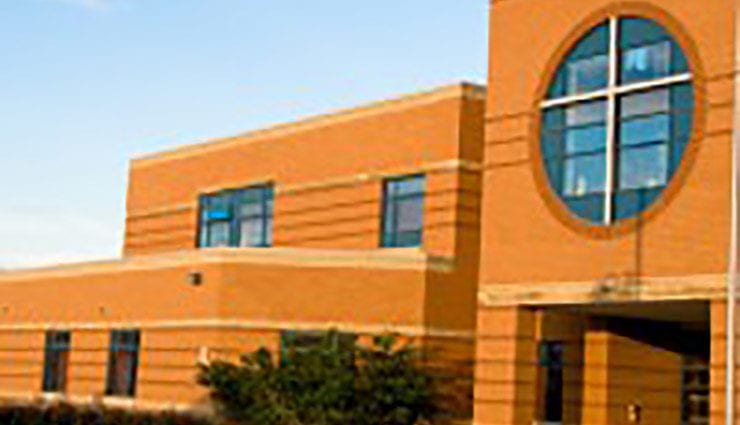08/14/2014 by Bob Regan |
The Schoolroom
Catholic Schools: A Unique Value Proposition
At Carney, Sandoe & Associates, we are inspired by the belief that Catholic schools are absolutely vital to the communities they serve, and that their powerful value proposition consists of four key elements that render these institutions unique and indispensable to families.

Our Catholic Schools Practice operates with a sense of urgency, realizing the importance of these schools.
Catholic schools offer:
1. High-quality, independent education
For the most part, Catholic schools are unfettered by extraneous demands, labor unions, and bureaucratic regulations and are committed to accountability and the best practices inherent in high-performing independent schools. Catholic schools are also active, collegial members of national and regional associations and have the liberty and wisdom to avoid faddish trends while focusing on core skills, content-rich curricula, and measurable student achievement. Teachers are caring and competent and choose to teach in Catholic schools despite the relatively low rate of compensation. As a result, numerous national and regional studies have consistently shown that Catholic schools outperform public schools in student achievement, especially in the inner city. One 2011 study, “Educating Our Children: Catholic Schools Doing More with Less,” demonstrated that average SAT scores among Catholic school students were 23% higher, while expenditure per student was nearly 25% lower.
2. Safe, nurturing, accountable environment
A secure environment with zero tolerance for bullying and external threats is the first requirement of every school. Catholic schools excel at cultivating a welcoming and respectful school culture and embrace a holistic approach to human development, including an active commitment to body, mind, and spirit. Some schools we work with have called this a kind of Renaissance model for student fulfillment, encouraging students to explore and experiment joyfully to discover their gifts and true passions. In addition, Catholic schools promote a high level of family engagement and connection to community, resulting in significant growth in social capital and a sense of accountability among students.
3. Values-based experience and mission
This is a critical differentiator for Catholic schools and a key reason why families of all faiths seek this experience for their children. While passionate about their Catholic identity and mission — requiring all students to participate in communal prayer and liturgies — Catholic schools are distinctly welcoming of all faith traditions. Students are encouraged to grow in their own beliefs while exploring comparative religions and being respectful of others. Faith formation is a core component of the campus conversation. In many Catholic schools, the percent of non-Catholic students and staff exceeds 30% — in some schools, this population reaches as high as 60 or 70 percent. Even Arch/Diocesan schools in some regions are seeing their demographics shift to include higher percentages of non-Catholic families. These families share a common concern about character development and moral behavior, the insidious coarsening of American culture, and the increasing secularization of schools and society at large. Catholic schools become the sole sanctuary for these caring families.
4. Family-friendly tuitions
With few exceptions, Catholic schools deliver a quality experience at a price point that is affordable to average American families. In some communities, independent secondary schools charge roughly $40,000 to $45,000, while Catholic schools charge anywhere from $8,000 to $14,000, on average. This is a powerful differentiator and compelling element in the Catholic school value proposition. Although some critics would like to see Catholic school tuitions reduced even further to enable access for all income levels, including the materially poor, this would collapse the business model and produce an unsustainable practice. The voucher argument has also not been persuasive in most states. Given the political dynamics of this debate, the role of philanthropy is to enrich the value proposition by ensuring equity and access for all who seek this extraordinary experience for their children, regardless of ability to pay.
At CS&A, we see the combination of these four value components as synergistic and quite unique in U.S. education. The sheer scale of this education model is also inspiring and unprecedented. More than 7,000 Catholic schools are educating upwards of 2.3 million students annually. But the news is not particularly sanguine at the moment. For reasons having little to do with performance or value to the community, many Catholic schools are currently at risk and facing dissolution. Since 1975, more than 30 percent of Catholic schools have been closed, denying families of this exceptional option and burdening local school districts with a sudden infusion of displaced and discouraged students. The trend is alarming, pernicious, and consequential.
Here is what we know for certain: When a Catholic school goes away, for whatever reason, it blows a hole in the community that is not likely to be replaced – ever. Families and children become the victims of every Catholic school closure. It’s a lose-lose outcome for sure.
At CS&A, we’re committed to helping these important institutions succeed, and we’ll use this blog as a medium for a healthy and spirited discussion. Share your thoughts on the Catholic school value proposition in the comments—and check back periodically for future posts on the successes of and threats to our nation’s Catholic schools.
Bob Regan is the leader of the CS&A Search Group’s Catholic Schools Practice. He can be reached at bob.regan@carneysandoe.com.
Image credit: iStockphot
Leave a Comment
0 Comments
There are no comments on this blog entry.